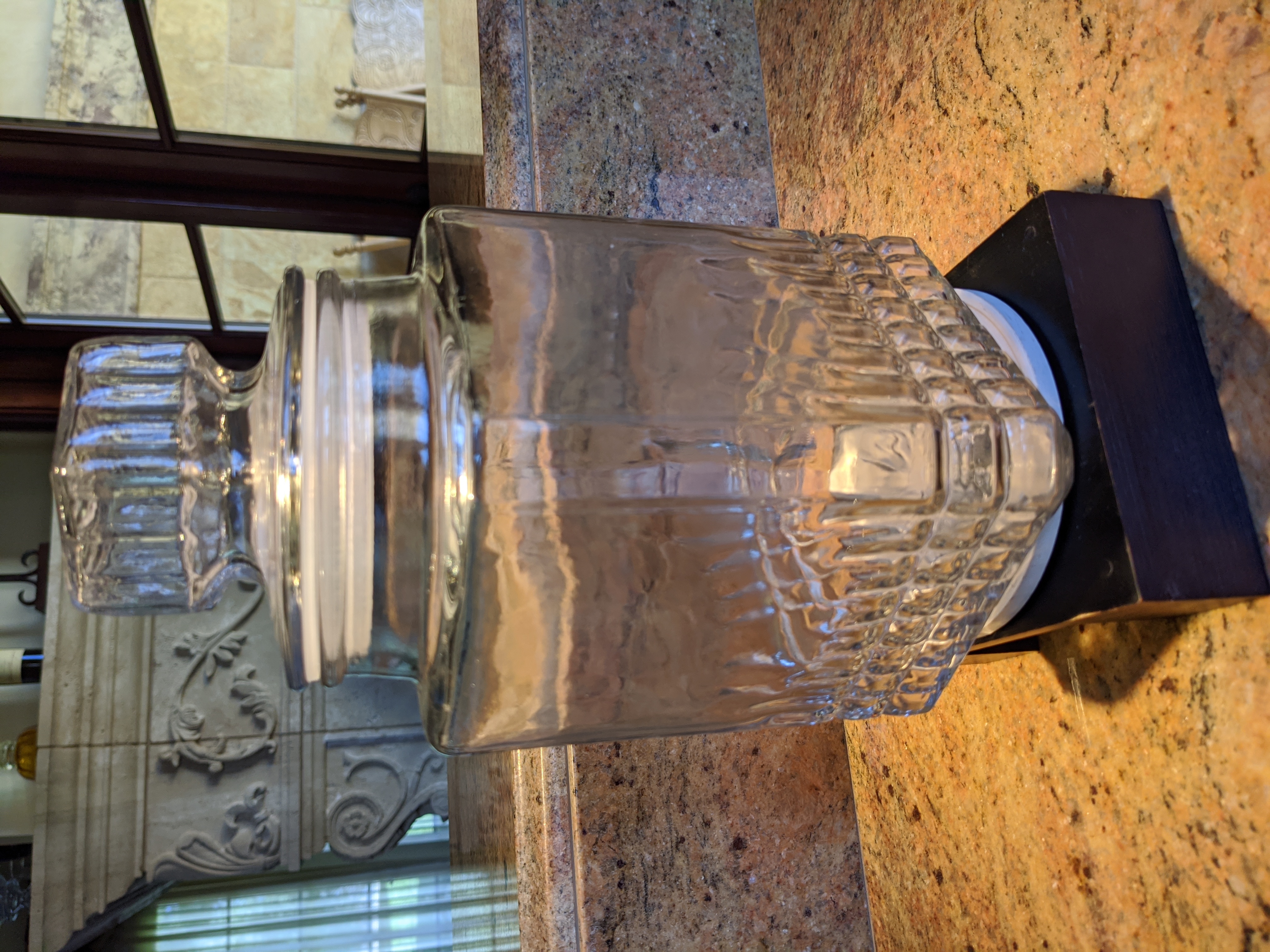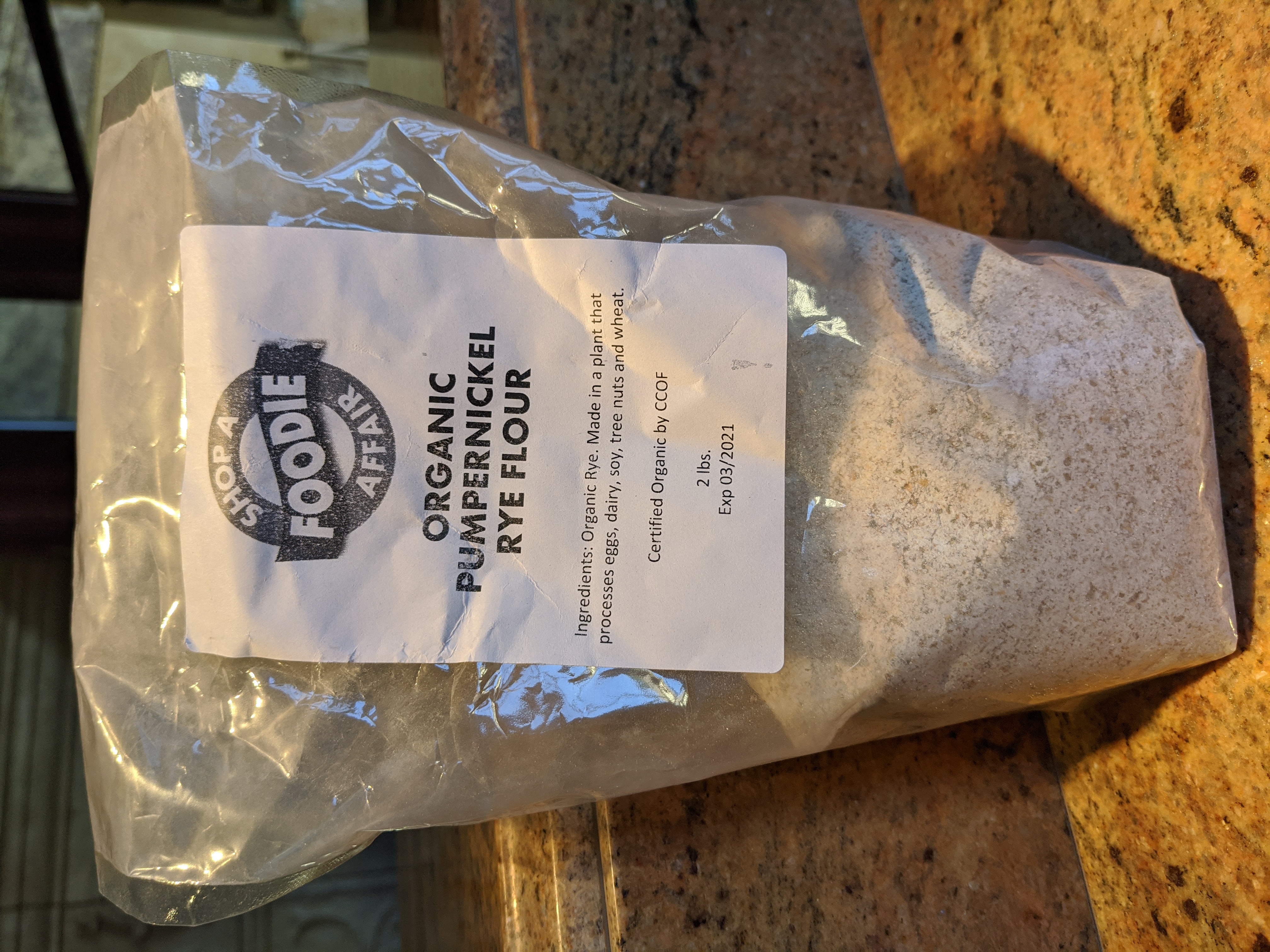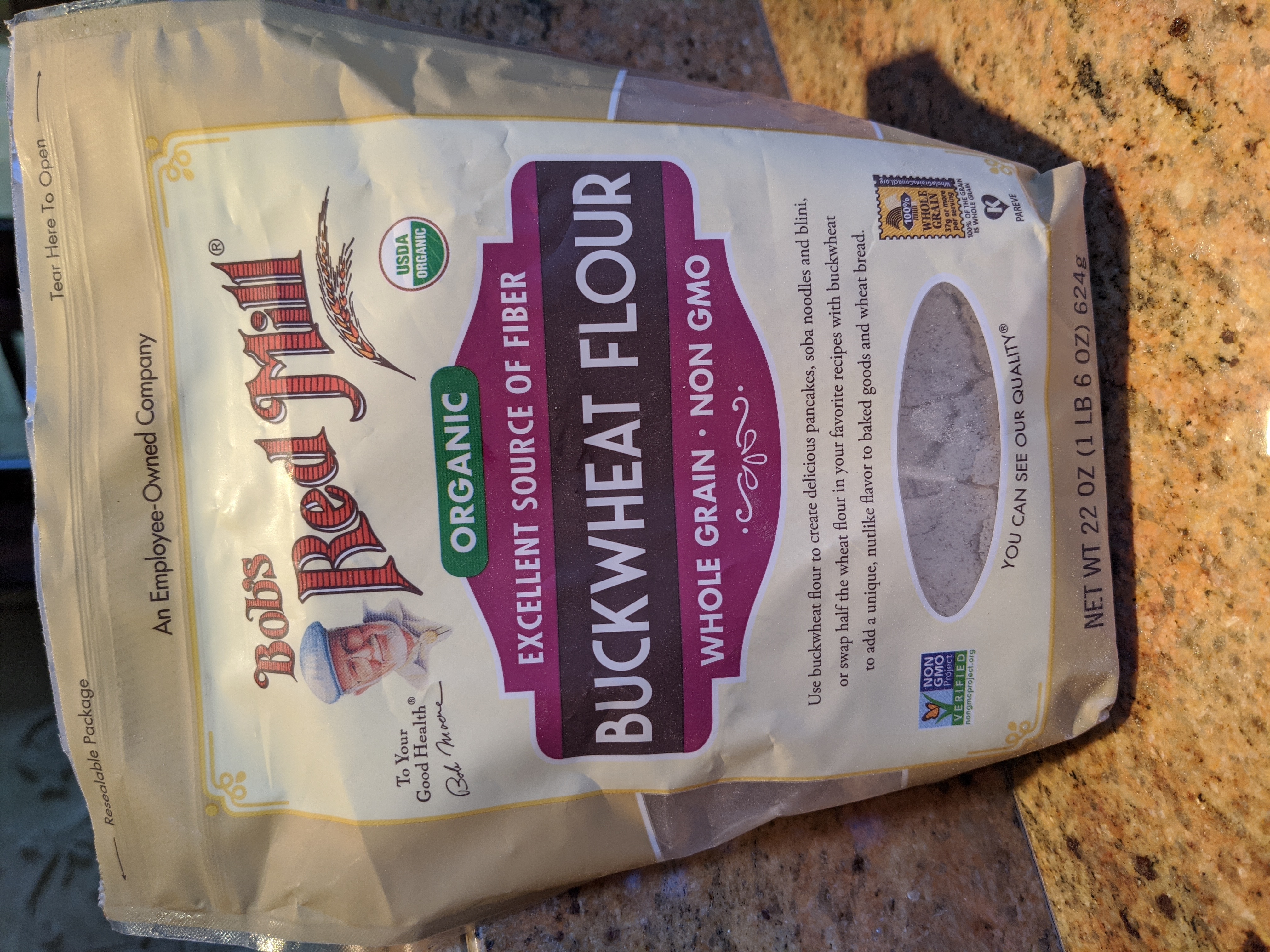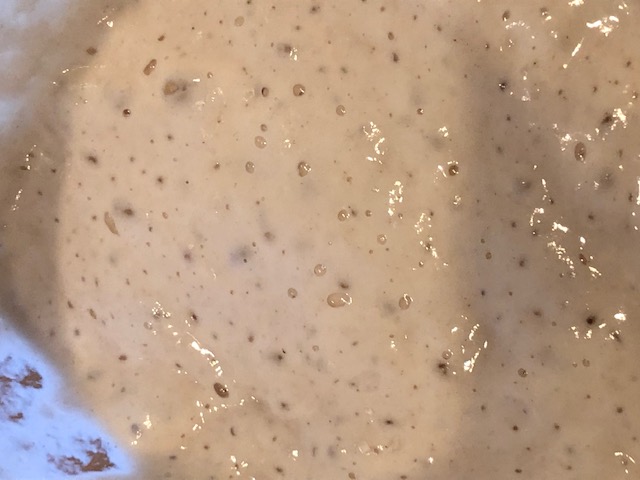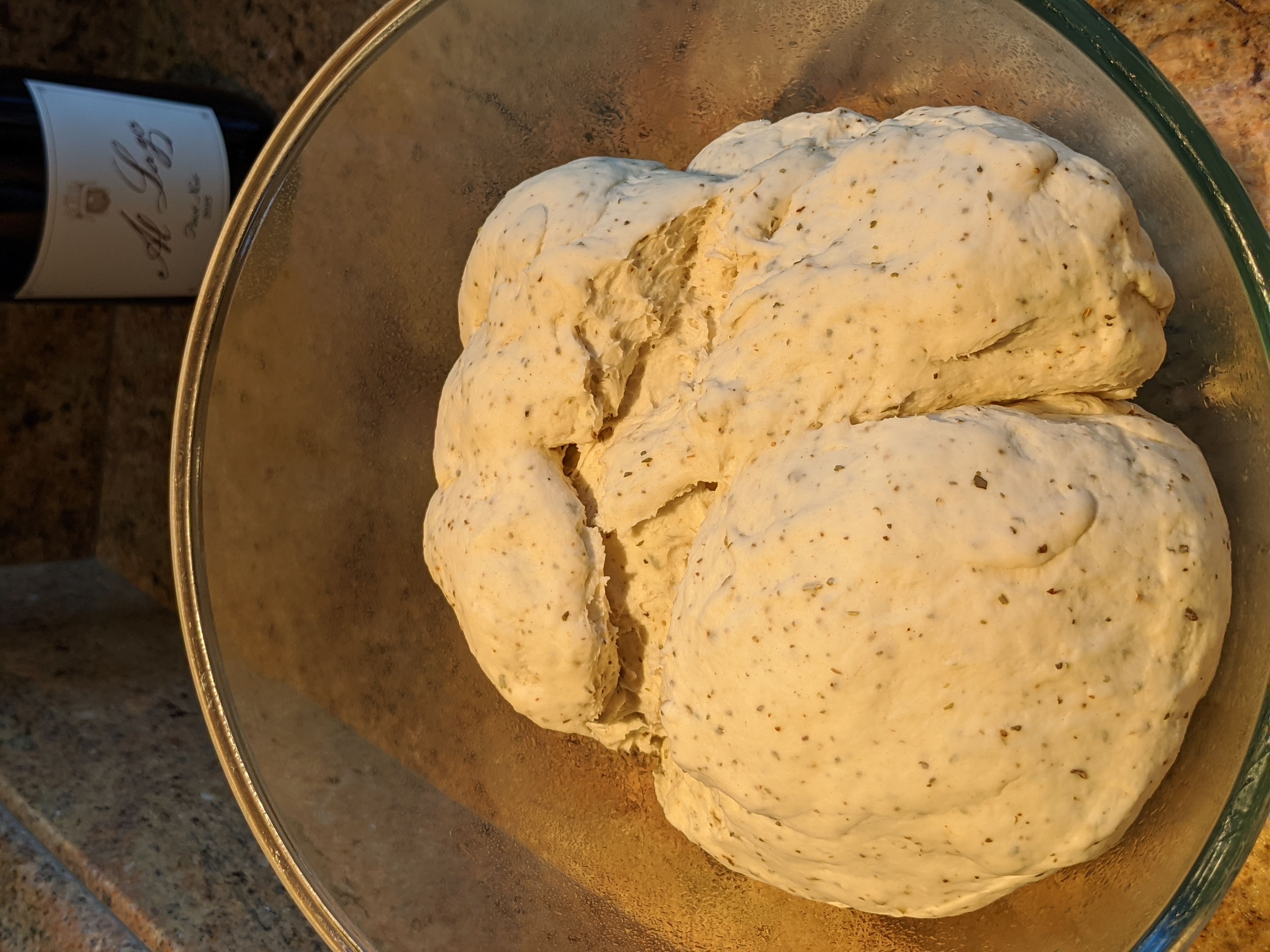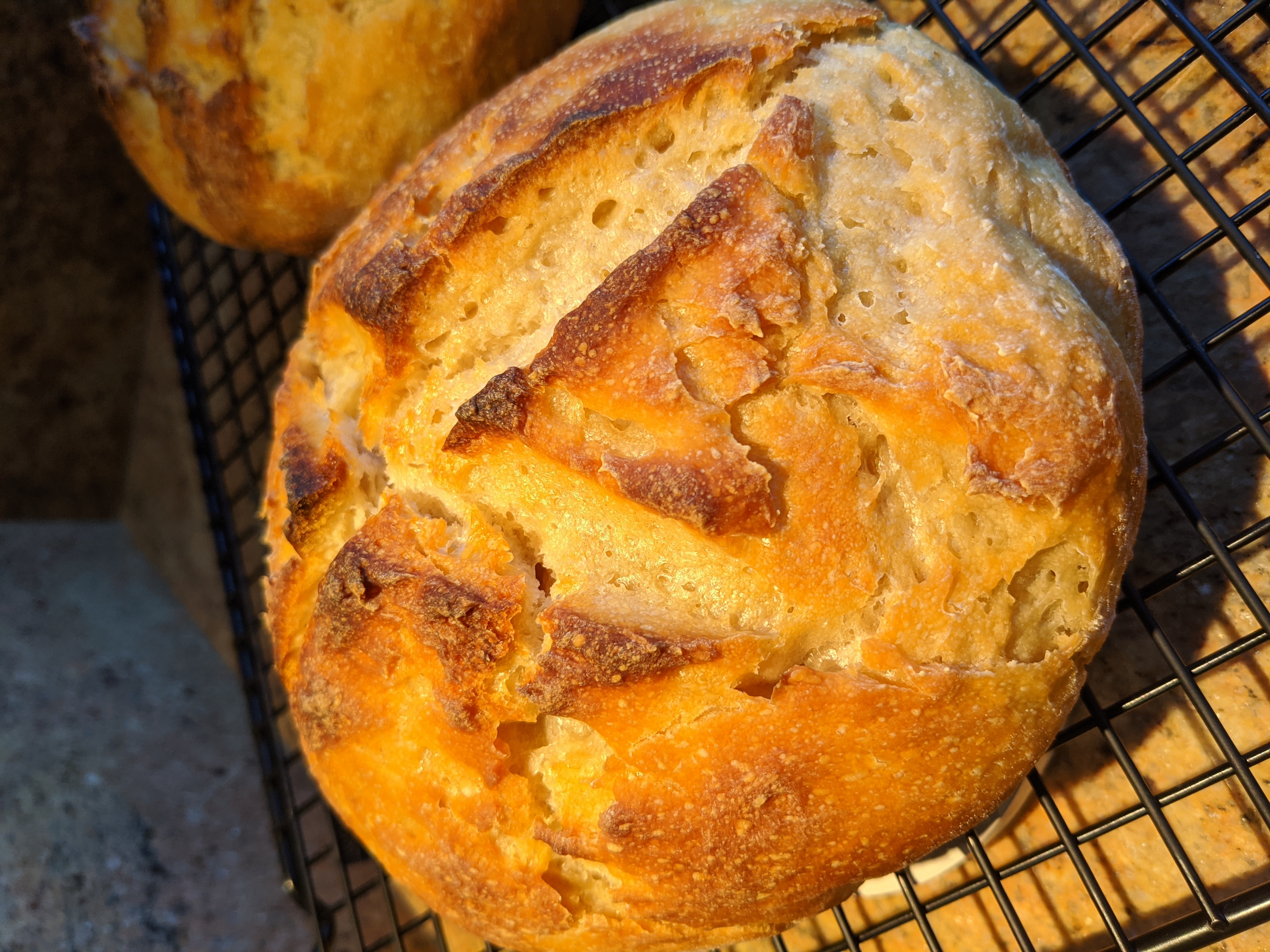Sourdough Bread Starter
Description
In early 2020, the COVID-19 pandemic changed our lifestyles completely. With more time at home, we took the opportunity (like many Americans) to make a sourdough starter and to create our own, personalized recipe for baking sourdough bread–-in a way that has become fool-proof for us after five months of experimenting. Of course, every loaf of sourdough bread starts with the starter. We have affectionately named our starter “The Beast”. The important note to consider when you decide to begin the process of making the sourdough starter is that you will have a lot of excess starter. Certainly, you can discard the excess starter, but I was raised with the philosophy that nothing should be thrown out if you can use it in some way. As a result, I save all of the “excess” starter in a platic container in the refrigerator; I now have several favorite recipes that use the excess Sourdough Bread Starter, including a great Sourdough Pizza Crust recipe (which you can access easily by clicking that recipe title).
It will take 5-7 days to make this Sourdough Starter.
At a Glance
Equipment
The one special piece of equipment that you will need is a “non-reactive” container that holds at least a quart in volume, such as a glass or a ceramic Mason jar (or other options -- such as stainless steel, or food-grade plastic – can be used). It is most important that it is a non-reactive container with a lid, like this one:
Ingredients
For Day One:
⅓ cup of Pumpernickel Rye Flour
⅓ cup of Buckwheat Flour (Whole Grain)
⅓ cup of All-Purpose Flour
½ cup of Water
Directions
Notes for Day One:
Combine all the ingredients in the container of your choice (please see the note regarding the required equipment in the notes on “Equipment” above) and stir until combined completely. Make sure that the contents are stirred completely together and there is no dry flour. The starter will grow in volume, so it is important to have a container that is large enough to accommodate the ingredients as they expand – at least a one-quart size should work. Put the lid on the jar somewhat loosely and store the jar on the counter top at room temperature. (Note: we live in California and we try to maintain our house temperature at around 70 degrees F. If your house is colder than this, you may want to store the starter in your oven or some other place where you can maintain the temperature at around 70 degrees Fahrenheit.)
Notes for the Morning of Day 2:
Ultimately, the starter should show signs of bubbling, but there may not be any signs of bubbling yet on the second day. Remove about half of the starter from the container in which it is stored (please note that you can store the excess starter in the refrigerator and use it in several different recipes -- such as Sourdough Pizza Dough, crackers, or fried bread). Then “feed” the remaining starter in your container by adding 1 cup of all-purpose flour and ½ cup of water at room temperature. Mix this in thoroughly, so that all of the flour is integrated and there is no dry flour. Set the container on the countertop if the temperature of your house is about 70 degrees; again, if it is cooler than that, place the starter somewhere around 70 degrees – perhaps in your oven.
Notes for the Evening of Day 2:
Remove half of your starter (again, it can be stored in the refrigerator and used in other recipes) and then “feed” your starter again by adding 1 cup of all-purpose flour and ½ cup of water. Thoroughly mix the ingredients until they are fully integrated and there is no dry flour in the starter.
Notes for Days 3 through 6:
Continue to remove half your starter--twice a day each day--and “feed” the starter twice a day each day with the 1 cup of all-purpose flour and ½ cup of water, mixing thoroughly each time. As you near day 6, your starter should be doubling in size between feedings, and should be bubbling.
Preparing to Make the Sourdough Bread:
We generally let the starter “rest” overnight after its last “feeding” and then we are ready to make the bread the next day by using our Sourdough Bread recipe, which you can access by clicking on that recipe title.
Preserving your Sourdough Starter:
Once you remove enough of the Sourdough Starter for your bread, feed the remaining starter with 1 cup of all-purpose flour, and ½ cup of water, mix them together thoroughly, and let the starter sit on the countertop for 3-4 hours, so the starter begins to activate again. Cover the starter for storage purposes. The starter should be stored in the refrigerator and should be "fed" once each week.
Weekly "Feedings" of the Starter:
Remove the starter from the refrigerator and bring the starter to room temperature to prepare for the "feeding". Remove half of the starter and either discard it or store it with the other, excess starter in the refrigerator. Then, “feed” the starter with 1 cup of all-purpose flour and ½ cup of water, and again mix these ingredients together thoroughly. Let it sit on the countertop for 3-4 hours to activate, then return it to the refrigerator.
Preparing to Make More Sourdough Bread in the Future:
Commencing three days before making the Sourdough Bread, take the starter out from the refrigerator, repeat the "feeding process" twice a day each day for several days, and leave the starter on the countertop until the starter is doubling in size and is bubbling. Then the starter is ready to use.



